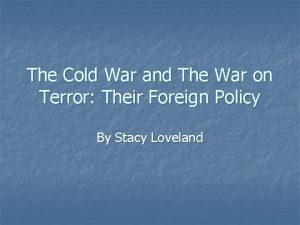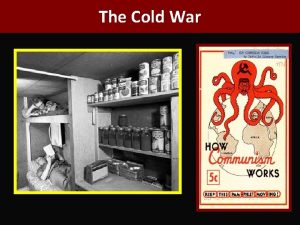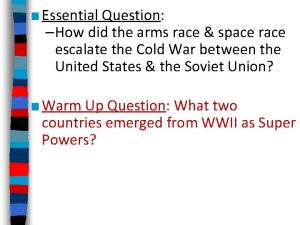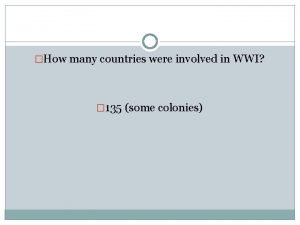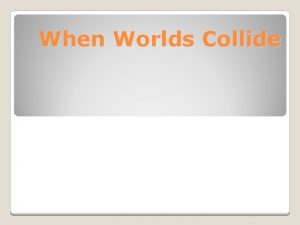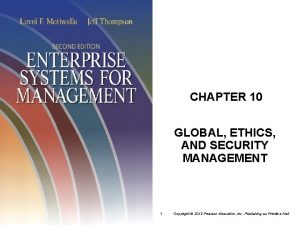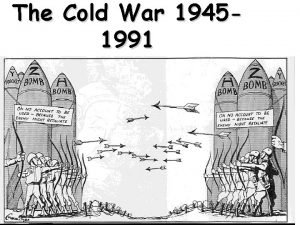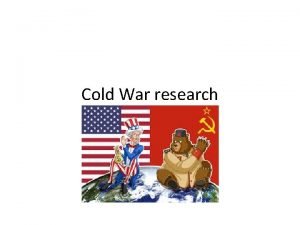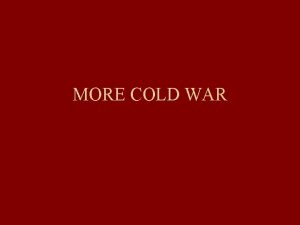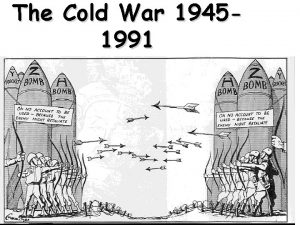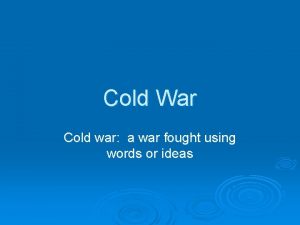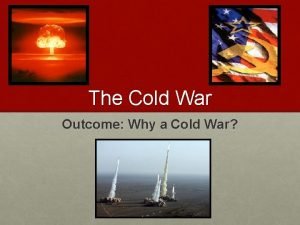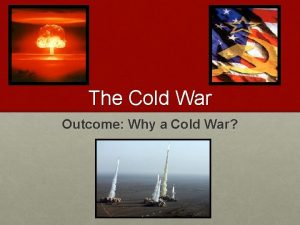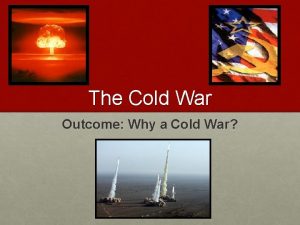The Cold War Who was involved Why were














- Slides: 14

The Cold War

Who was involved & Why were they “fighting? ” • United States • NATO • Capitalist democracy • Believed in free election, religious freedom, private property, respect for individual differences Soviet Union Warsaw Pact • Communist party made all key economic, military, & political decisions. • Soviet people could not worship as they please, own private property, express views freely, or oppose Stalin or risk imprisonment.

What was the Cold War? A 46 -year struggle between 2 superpowers, the U. S. and the Soviet Union. But they never engaged in a direct “hot” military conflict.

What was the Cold War? Soviet Expansion: The Soviet Union occupied most of Eastern Europe by the end of World War II.

The “Iron Curtain”


When was the Cold War? • 1946 -1991

Where was the Cold War? • • • U. S. Europe Soviet Union Latin America Vietnam Etc….

Review • Who? U. S. and Soviet Union • Why? Differences in ideologies, communism • What? Never engaged in direct “hot” military conflict 1946 -1991 • When? • Where? All over the world, Europe, Soviet Union, Vietnam, etc.

How did the U. S. try to stop the Soviet Union from spreading communism? • Containment policy: Do not directly engage the Soviet Union in a battle, but try to stop it from spreading!

Marshall Plan (Sec. of State) • Grants & loans to W. Europe to keep them economically healthy • Help them become politically stable and less susceptible to Communist take-over

· Marshall, fearing that communist revolts could occur in such an atmosphere, proposed that the U. S. help to rebuild the European economy in what became known as the Marshall Plan. Nuremberg, Germany, April 20, 1945

* The U. S. gave over $12 billion in aid to European countries between 1948 and 1952, helping to improve their economies and lessen the chance of communist revolutions.

Space Race • http: //www. history. com/topics/space-race • Duck and Cover • https: //www. youtube. com/watch? v=XWGo. VZ F 0 jik
 The cold war lesson 1 the cold war begins
The cold war lesson 1 the cold war begins Cold war who was involved
Cold war who was involved Site:slidetodoc.com
Site:slidetodoc.com Proxy wars in the cold war
Proxy wars in the cold war Cold war characteristics
Cold war characteristics Andreas carlsson bye bye bye
Andreas carlsson bye bye bye What started the cold war
What started the cold war Why did the arms race escalate during the cold war
Why did the arms race escalate during the cold war Civil war first modern war
Civil war first modern war How many countries were involved in wwi
How many countries were involved in wwi What continents were involved in the columbian exchange
What continents were involved in the columbian exchange What countries were involved in wwi
What countries were involved in wwi Dmaic storyboard template
Dmaic storyboard template Ethics in security management
Ethics in security management Why does mercutio get involved in the fight
Why does mercutio get involved in the fight

